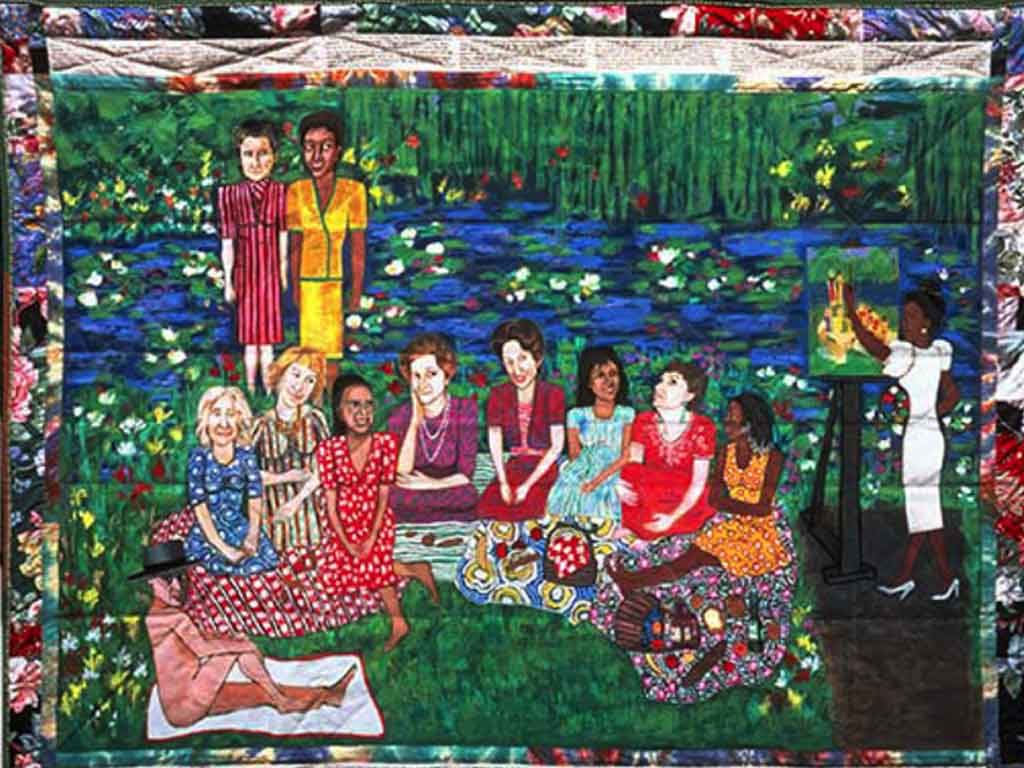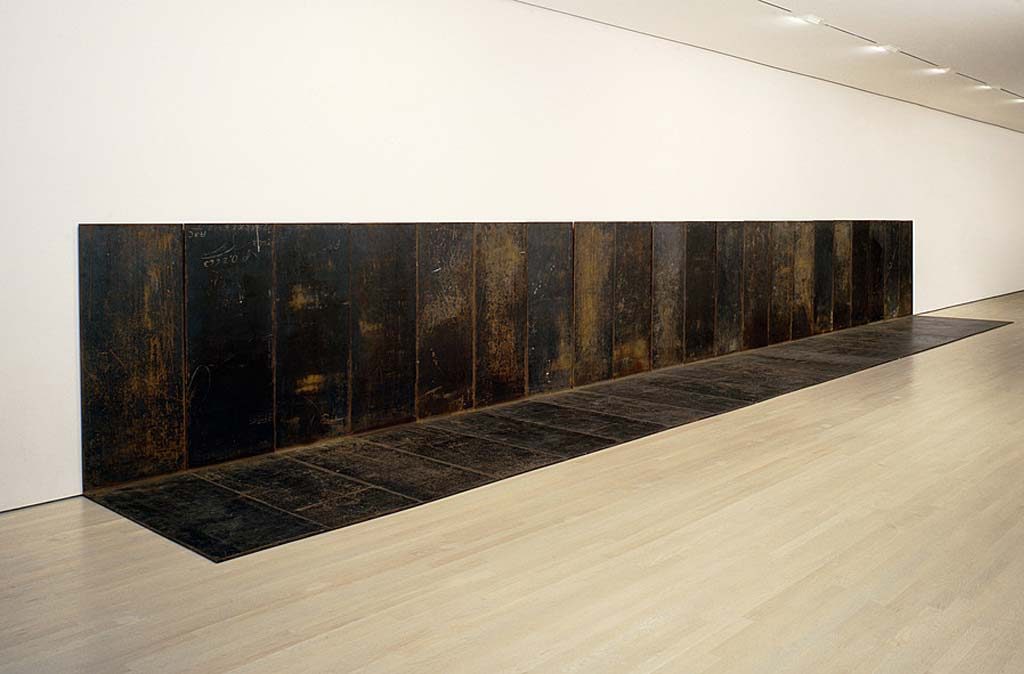The image above is one of a Barnett Newman creation titled ‘Onement VI’, which was auctioned for $43.8 Million in 2013. Got your attention? Read on.
As we find ourselves sprinting along with time to measure up to the progressive world that we live in, we find everything around us evolving at a dynamic pace; amidst all of which there seems to be something that hasn’t advanced as per expectations – our approach towards unfamiliar things, things that seem to move us out of our comfort zones to provide new and unexplored avenues of thought. Where do we find ourselves in such situations? In the heart of aversion.
A similar approach is often seen when people view contemporary or conceptual art.
It’s quite easy to look at a painting or sculpture and frame an impulsive opinion. ‘I could have done that, it’s so simple’ is a common reaction people have to reviewing an artist’s work.
Whether you are an art enthusiast or someone who is new to the world of art, there are a few things that you need to understand while viewing anything that springs off ‘creative activity.’
Let’s look at an example,
Women and Birds at sunrise by Joan Miro reflects the time when abstract and contemporary had begun crawling into mainstream art and found itself a place on the walls of recognition. On viewing the above piece, some people find themselves bedazzled, “How is this art?” “How is the artist who created this even famous?” If you’re wondering that your 6-year old sibling, 4-year old toddler or perhaps you could have done a better job, then I’ll say you could have, but you didn’t.
Does that mean an artist’s work only finds recognition because he managed to create something before anyone else did? Of course not, although there exists a ‘first mover advantage’ in art, the availability of the thought or work put into a piece is highly uncommon, and does exist in the hands of most individuals.
Most people begin evaluating an artist’s composition on the lines of their ‘theory of beauty’ which certainly differs for each one of us.
In my opinion, to wander about the works of Joan Miro is to be reminded that life is filled with color and shape and the smallest things in life are worth noticing and celebrating. Above all, Miro reminds us how important a sense of humor is in life, allowing us to stop taking ourselves so seriously.
Art isn’t always about complicated technicalities or incredible levels of dexterity that need to be portrayed on a canvas. The foremost reason why art exists in perpetuity is that art is a documentation of an idea that survives the undercurrents of time.
So the next time you feel like questioning an artist’s craftsmanship, ask yourself a couple of questions that will help you understand conceptual art:
1. What was the situation in which the piece was created?
A great way to discover more about the artists’ style and the thought behind his work is to evaluate the social, economic and political settings from which the composition has originated.
In the early contemporary settings, many artists began to deskill art for multiple reasons; to upset the dominant trends of the time, to question the value of a unique object, to express a strong opinion on the current set of practices, to question the commercial system of art – thus making things that are unlikely to become trophies for the rich.
For instance, feminist art had originated during the suffragette movement in efforts to voice out thousands of unheeded opinions. Feminist art aimed to give women a just and rightful place in the world. In a general sense, it sought to change cultural attitudes and transform stereotypes. Faith Ringgold and her famous ‘story quilts’ are one such example.
The Picnic at Giverny (1991) reverses the women’s submissive role and shows the figure boldly painting in Monet’s Giverny garden, while a nude Picasso poses along the sidelines to encourage greater equality.
2. What does the artist want to communicate through his composition?
Art does not exist to impress, it is a medium of expression that originates from the creative depths of the artist’s thought-process. Before forming your interpretation of a painting or sculpture, try to figure out what the artist wants you to understand. Anything worth appreciation deserves your attention, look at it more than once, and look at it when you find yourself free from any biases to might hold against the artist.
Don’t fall prey to your instinctual reactions. There’s a reason why we humans tend to contemplate almost everything in life.
The beauty of art lies in the freedom it communicates; there is sculpture that is purposefully monumental, paintings that are deliberately austere and poetry that is intentionally abstruse.
The Minimalism movement had commenced to further advocate effective execution of ideas, the exploration of new yet common materials and its amalgamation with radical thought that compelled people to reconsider their definition of ‘all things art’, people began expanding boundaries where now, the diverse natures of creativity had found appreciation.
Fall by Andre embodies the characteristic features of the Minimalism movement; Andre had given birth to a distinctive idea by employing ready-made materials and modular units. Through this articulation of three-dimensionality, he sought to reduce the vocabulary of 20th century sculpture to basic phonemes. Andre has placed significant emphasis on the relation between site and viewer. Andre’s consistent search for the simplest, most rational models embodies a moral philosophy as well as an artistic practice.
This might just seem like an edge of a room that’s been painted differently to you, but if you allow yourself to, there’s a lot more you may observe through this piece.
Art appreciation may not be ‘productive’ in the common sense of the word, but it is a brilliant mode of reflection.
Art lets you reflect and even if you come to a conclusion that differs from the artist’s intention, you realize a little about yourself – You saw it as a spoon and he drew it as a fork. It’s fluid like nothing else we do is.
3. So then, how am I supposed to appreciate/critique art?
Understand that no matter how interested or involved you’ve been in the art industry, you don’t know everything. Be generous; don’t quote something briefly whether it’s critique or admiration. Don’t limit your praise/criticism to petite words like ‘interesting’, ‘dull’.
Explain yourself. Discuss with people who share your opinion, argue with people who don’t. You never know when you could change your mind.
The interesting part is that many people believe abstract and conceptual art is for the art-educated, but in reality, when work is so open to interpretation, anyone can have an opinion. And if you were to ask, everyone does.
[socialpoll id=”2301158″]













